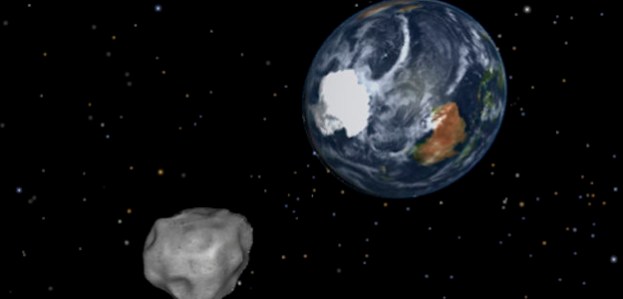 Although the idea of an enormous asteroid smashing into our plant and ruining our day in a big way still seems fantastical to many, events like the one over central Russia earlier this year mean more and more earthlings are waking up to the idea that, actually, such a cataclysmic event is well within the realms of possibility.
Although the idea of an enormous asteroid smashing into our plant and ruining our day in a big way still seems fantastical to many, events like the one over central Russia earlier this year mean more and more earthlings are waking up to the idea that, actually, such a cataclysmic event is well within the realms of possibility.
In fact, so concerned is NASA about the threat of destructive Earth-bound rocks that this week in Washington it announced a worldwide “Grand Challenge” aimed at finding all asteroid threats to our planet. The initiative, which everyone is invited to get involved with, also hopes to come up with new ideas about how to deal with these problematic space rocks hurtling in our direction.
For some of you, discovering that NASA is asking us to help may well cause a little discomfort, conjuring up memories of the is-there-anyone-on-board-who-knows-how-to-fly-a-plane moment in the classic comedy movie Airplane. After all, aren’t the folks at the multi-billion-dollar-funded space agency on top of the situation when it comes to the subject of planet-destroying asteroids?
All hands on deck
Well, OK, it’s not just us “citizen scientists” that it’s turning to for help. According to NASA, partnerships with other government agencies, international partners, industry, and academia are also part of its Grand Challenge.
“NASA already is working to find asteroids that might be a threat to our planet, and while we have found 95 percent of the large asteroids near the Earth’s orbit, we need to find all those that might be a threat to Earth,” NASA deputy administrator Lori Garver said. “This Grand Challenge is focused on detecting and characterizing asteroids and learning how to deal with potential threats. We will also harness public engagement, open innovation and citizen science to help solve this global problem.”
Tom Kalil of the White House Office of Science and Technology Policy said he was delighted NASA had issued its challenge “because finding asteroid threats, and having a plan for dealing with them, needs to be an all-hands-on-deck effort.”
Potentially hazardous asteroids
Last year NASA said it believes there are around 4,700 potentially hazardous asteroids (PHAs) flying around ‘near’ Earth, each one large enough to cause some serious harm were it to score a direct hit with the our planet. PHAs are defined by NASA as any asteroid currently within five million miles of Earth with a diameter greater than 330 feet (100 meters).
The space agency has more information about its Grand Challenge on its website, so if you have any good ideas about to stop these incoming rocks – a swarm of tiny spacecraft and a lasso are two solutions already being looked at – then don’t hesitate to get in touch. You may just save the planet.


